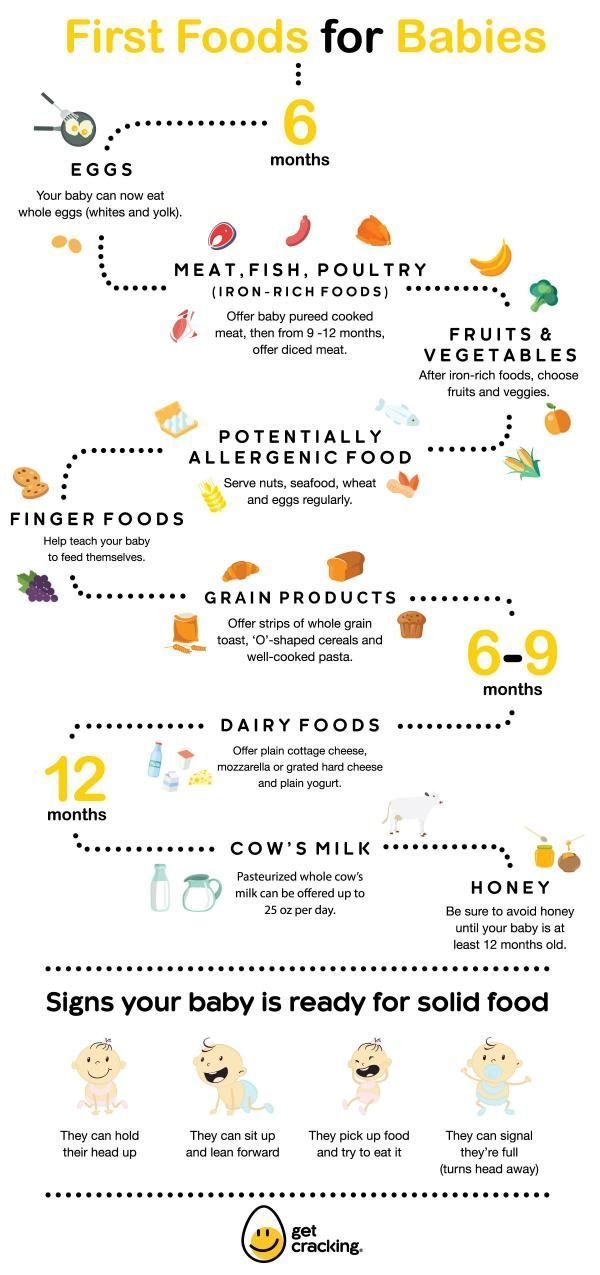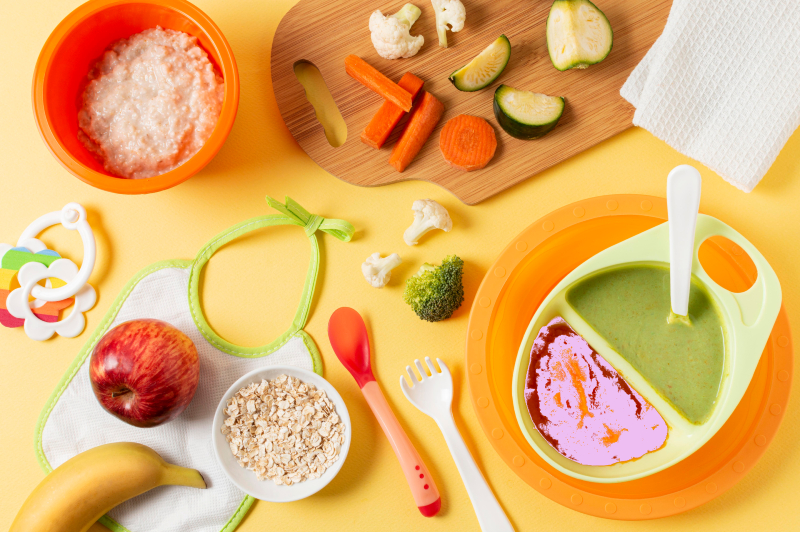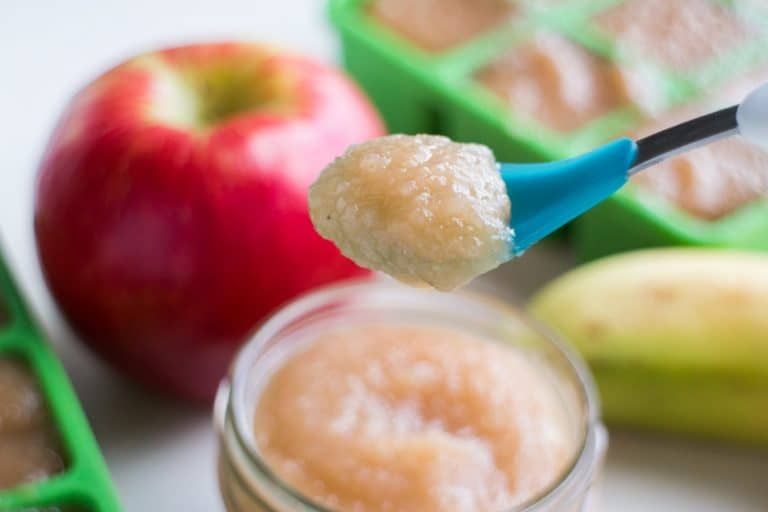When can you feed peanut butter to baby
When Can Babies Have Peanut Butter: A Guide
Peanut butter is a versatile food that’s both tasty andhealthy. You can enjoy it as a snack or meal. Scoop a spoonful of crunchy peanut butter on a celery stick, or make a peanut butter, jelly, and banana sandwich for lunch.
No matter how you spread it, peanut butter is delightful, and it can be a staple of any healthy diet.
The problem is, it also can’t be. That’s because about 3 million people in the United States are allergic to peanuts and tree nuts. In fact, a peanut allergy is the most common allergy among food allergic children.
But recent research found that early exposure to peanuts could significantly decrease the chances of your baby developing a nut allergy.
If you want to introduce your baby to peanut butter, but you’re nervous about allergies, read on for tips, tricks, and a few recipe ideas.
The American Academy of Allergy, Asthma, and Immunology recommends introducing peanut butter to your baby only after other solid foods have been fed to them safely, without any symptoms of allergies. This can happen between 6 and 8 months of age.
Avoid giving whole peanuts or peanut pieces to any child under 4 years old. Peanuts can be a choking hazard.
Peanuts are among the eight foods that account for 90 percent of all food allergy reactions. Peanut allergies, which usually develop in childhood, can be lifelong. If you do outgrow a peanut allergy, there’s still a chance it may return.
Children with other food allergies are at an increased risk of having a peanut allergy. The same goes for children in families where food allergies are common. Children who have tested positive for a peanut allergy should never be given peanuts.
You should also proceed with caution when introducing peanut butter to your baby if you think they are at risk for the allergy. First, speak with your doctor and ask about an allergy test. If you’re certain you want to introduce peanuts, it may be a wise idea to give your baby peanut butter while at the doctor’s office.
There are several ways to spot a food allergy. You child might experience:
You child might experience:
- hives (red spots that mimic mosquito bites)
- sneezing and/or wheezing
- breathing problems
- swelling
- itchy rashes
- throat tightness
- swelling
- nausea
- vomiting
- diarrhea
- pale skin
- circulation symptoms
- lightheadedness
- loss of consciousness
Food allergy reactions can range from mild to severe. They can also happen shortly after the food is consumed. Normally, your child will experience an allergic reaction in one location of their body. But if your child suffers from anaphylaxis, a serious, life-threatening allergic reaction caused by foods like peanuts, they will experience multiple symptoms at once. Anaphylaxis requires immediate medical attention in the nearest emergency room.
If your child suffers a severe allergic reaction, they will need to see their pediatrician (and likely an allergist) to help determine the cause and treatment of their allergy.
You should serve babies peanut butter that’s smooth and thin. Thick peanut butter can be hard for a baby to eat. If it’s too thick to swallow, it can be a choking hazard.
Avoid buying chunky peanut butter and serving actual peanuts. Both of these can cause your little one to choke. To thin the texture of your peanut butter, mix in a little water so it’s more like a watered down paste.
Peanut Butter Teething Biscuits
This peanut butter teething biscuit recipe is a tasty and organic way to help your baby use their new chompers. The biscuits call for only eight ingredients, and it takes just 10 minutes to prepare and 20 minutes to cook.
The recipe yields 20 to 24 treats. You can serve them at room temperature or put them briefly in the freezer to help soothe your baby’s gums. Make sure they are not too hard and crumbly so pieces do not break off and cause a choking risk.
Peanut Butter and Butternut Squash
Add pizazz to the rotation of solid foods you feed your little one with peanut butter and butternut squash. This two-ingredient recipe calls for some peanut butter and frozen butternut squash puree, thawed and heated in the microwave.
This two-ingredient recipe calls for some peanut butter and frozen butternut squash puree, thawed and heated in the microwave.
It’s a quick and easy recipe that’ll take just 10 minutes to prepare.
PB&J Oatmeal Thumbprint Cookies
Weelicioushas a healthy twist on a childhood favorite: PB&J oatmeal thumbprint cookies. This delightful recipe only takes 15 minutes to make. They take just five minutes to prepare and 10 minutes to bake. You’ll need nine ingredients all together.
When it comes time to shape the cookies, have your toddler help. Let them use their thumb to press down on the cookies, then fill the indent with your favorite jam or jelly.
The recipe makes 60 cookies.
Share on Pinterest
When can I start giving my baby peanut butter?
Log in | Register
Tips & Tools
Tips & Tools
Listen
Español
Text Size
Question
Amanda Cox, MD, FAAAAI
Answer
Many parents have questions and concerns about when peanut butter can be safely introduced, because it is the leading cause of fatal and near-fatal food allergic reactions in the United States.
New Guidelines on the Introduction of Allergenic Foods:
For many years, experts thought that the best way to fight peanut allergy was to avoid peanut products in the first years of life. At the time, it was thought that delaying introduction would possibly prevent the development of other allergic conditions, especially eczema. However, more recent guidelines show that there is no benefit to delaying the introduction of allergenic foods. In 2015, an important study showed that early introduction and regular feeding of peanut prevented the development of peanut allergy in infants at "high risk" for peanut allergy (meaning infants who had severe eczema and/or an egg allergy).
Advice to Parents:
Start solids with a few foods that are of low allergy risk—for example, infant cereal, puréed bananas, or puréed prunes. Give your baby one new food at a time, and wait at least 2 to 3 days before starting another. After each new food, watch for any allergic reactions such as diarrhea, rash, or vomiting.
 If any of these occur, stop using the new food and consult with your child's pediatrician.
If any of these occur, stop using the new food and consult with your child's pediatrician.If there is no special reason to be concerned that your baby is at increased risk for food allergies, after a few first foods have been tolerated, you can start to introduce the more highly allergenic foods (milk, egg, soy, wheat, peanut, tree nuts, fish, and shellfish). It is important that these—and all foods—are in forms and textures appropriate for infants. For instance, while whole cow's milk is not recommended before 1 year of age; you may introduce processed dairy products such as whole milk yogurt or Greek yogurt mixed with a fruit that your baby has already had in his or her diet.
If your baby has or had severe, persistent eczema or an immediate allergic reaction to any food— especially if it is a highly allergenic food such as egg—he or she is considered "high risk for peanut allergy." You should talk to your child's pediatrician first to best determine how and when to introduce the highly allergenic complementary foods.
 Ideally peanut-containing products should be introduced to these babies as early as 4 to 6 months. It is strongly advised that these babies have an allergy evaluation or allergy testing prior to trying any peanut-containing product. Your doctor may also require the introduction of peanuts be in a supervised setting (e.g., in the doctor's office).
Ideally peanut-containing products should be introduced to these babies as early as 4 to 6 months. It is strongly advised that these babies have an allergy evaluation or allergy testing prior to trying any peanut-containing product. Your doctor may also require the introduction of peanuts be in a supervised setting (e.g., in the doctor's office). Babies with mild to moderate eczema are also at increased risk of developing peanut allergy. These babies should be introduced to peanut-containing products around 6 months of age; peanut-containing products should be maintained as part of their diet to prevent a peanut allergy from developing. These infants may have peanut introduced at home (after other complementary foods are introduced), although your pediatrician may recommend an allergy evaluation prior to introducing peanut.
Babies without eczema or other food allergies, who are not at increased risk for developing an allergy, may start having peanut-containing products and other highly allergenic foods freely after a few solid foods have already been introduced and tolerated without any signs of allergy.
 As with all infant foods, allergenic foods should be given in age- and developmentally-appropriate safe forms and serving sizes.
As with all infant foods, allergenic foods should be given in age- and developmentally-appropriate safe forms and serving sizes.
Choking Prevention:
Whole peanuts themselves are choking hazards and should not be fed to babies. They can block the air passages, and if whole or partially chewed peanuts are inhaled into the lungs, they can cause a severe and possibly fatal chemical pneumonia. Avoid whole peanuts until your child is old enough to be counted on to chew them well (usually at least 4 years and up).
A good way to introduce peanut in infancy would be mixing and thinning-out a small amount of peanut butter in cereal or yogurt. Dissolving peanut butter puffs with breast milk or formula and feeding it by spoon is another good option.
Remember:
The highly allergenic foods should initially be given to your baby in small tastes at home, and the amount can gradually be increased in a developmentally appropriate manner if there are no signs of intolerance or allergic symptoms.
NOTE: The AAP recommends breastfeeding as the sole source of nutrition for your baby for about 6 months. When you add solid foods to your baby's diet, continue breastfeeding until at least 12 months. You can continue to breastfeed after 12 months if you and your baby desire. Check with your child's doctor about vitamin D and iron supplements during the first year. Remember that each child's readiness for solid foods depends on his own rate of development.
Additional Information & Resources:
Working Together: Breastfeeding and Solid Foods
Sample Menu for an 8 to 12 Month Old
Infant Allergies and Food Sensitivities
Peanut Allergies: What You Should Know About the Latest Research
- The Effects of Early Nutritional Interventions on the Development of Atopic Disease in Infants and Children: The Role of Maternal Dietary Restriction, Breastfeeding, Hydrolyzed Formulas, and Timing of Introduction of Allergenic Complementary Foods (AAP Clinical Report)
Amanda Cox, MD, FAAAAI
Amanda Cox, MD, FAAAAI is an Assistant Professor of Pediatrics in the Division of Pediatric Allergy and Immunology at the Icahn School of Medicine at Mount Sinai in New York and a practicing pediatric allergist at Jaffe Food Allergy Institute.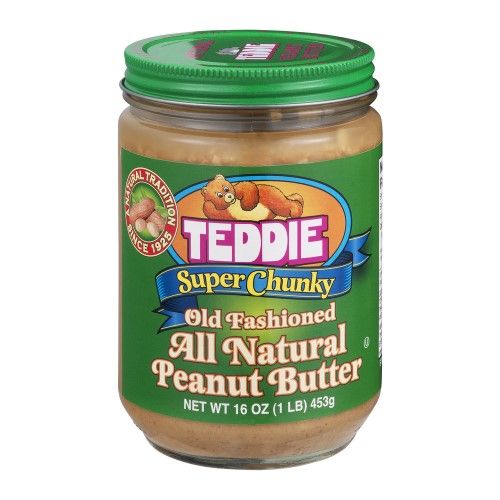 She is a former president of the New York Allergy & Asthma Society and a fellow of the American Academy of Allergy Asthma & Immunology where she serves on the Adverse Reactions to Foods Committee. Dr. Cox is a contributing writer to The Pediatrician's Guide to Feeding Babies and Toddlers and has written several book chapters and review articles in the area of food allergy.
She is a former president of the New York Allergy & Asthma Society and a fellow of the American Academy of Allergy Asthma & Immunology where she serves on the Adverse Reactions to Foods Committee. Dr. Cox is a contributing writer to The Pediatrician's Guide to Feeding Babies and Toddlers and has written several book chapters and review articles in the area of food allergy.
- Last Updated
- 3/17/2019
The information contained on this Web site should not be used as a substitute for the medical care and advice of your pediatrician. There may be variations in treatment that your pediatrician may recommend based on individual facts and circumstances.
Peanut butter can be given to young children even if they are prone to allergies: a new opinion from scientists will tell you that you will have to give up nuts for at least three years.
 What for? Doctors usually say that introducing peanuts into the diet will only contribute to the development of allergies in the future. However, new guidelines from the National Institute of Allergy and Infectious Diseases call into question this old rule.
What for? Doctors usually say that introducing peanuts into the diet will only contribute to the development of allergies in the future. However, new guidelines from the National Institute of Allergy and Infectious Diseases call into question this old rule.
New recommendation
New research suggests you can let your baby try nuts as early as four to six months old. “This is not new to us as allergists, but to the public and pediatricians, this recommendation will seem new,” says Rolando Nunez, an allergist-immunologist with the Asthma and Allergy Association in Florida.
"Whether a child's risk of developing allergies is high, low, or none at all, introducing foods containing peanuts early in life can help prevent or reduce the risk of developing them later in children."
Lyudmila Porgina voiced Proklova's fee for the interview and commented on it
We need a wall and 5 minutes of time: an exercise that relieves pain in the neck and back
Agriculture instead of permafrost: forecast of the Ministry of Natural Resources
If your doctor gives a green light and allows you to add nuts to your child's diet, it is best to start with small doses.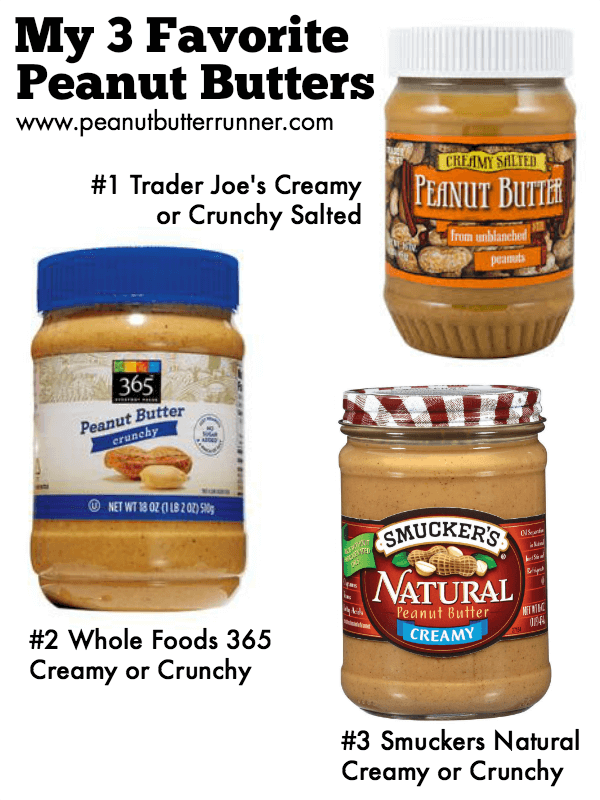
A growing problem in Western countries
Peanut allergy is a growing problem in Western countries. Although only half of the children were allergic to peanuts, parents were still advised to keep them away from nuts until at least three years of age, according to a national survey conducted in the United States.
But by 2010, this figure had almost doubled. A similar epidemic is being seen in other countries such as the UK and Canada, where parents of children at high risk of developing peanut allergy are also being advised not to add foods with peanuts to their child's diet during their first year of life.
This led scientists to wonder if cutting out peanuts could do more harm than good to children's future health. But statistics were not the only catalyst for skepticism. The scientists also found that children from other countries who ate nuts in their early years had a lower prevalence of peanut allergy than those in Western countries.
Healthy sleep, movement and new knowledge: how to slow down brain aging
A Russian woman who went to live in Reunion shared her impressions about the island from the United States and England teamed up for a collaborative study to find the best strategy for preventing peanut allergy in children. They divided 640 children aged four to 11 months into groups based on their risk of developing allergies. The first included children with a high risk, and all the rest in two separate groups.
One group ate peanuts at three or more meals each week, while the other group avoided them for five years. The study found that only 1.9 percent of children who ate peanuts at an early age developed an allergy by the age of five, while almost 14 percent of children who gave up peanuts developed it later.
When to add peanuts to a child's diet
New child care guidelines have been amended based on this study, but experts say it's still best to check with a doctor before eliminating peanuts from children's diets, whether or not there is a risk of allergy.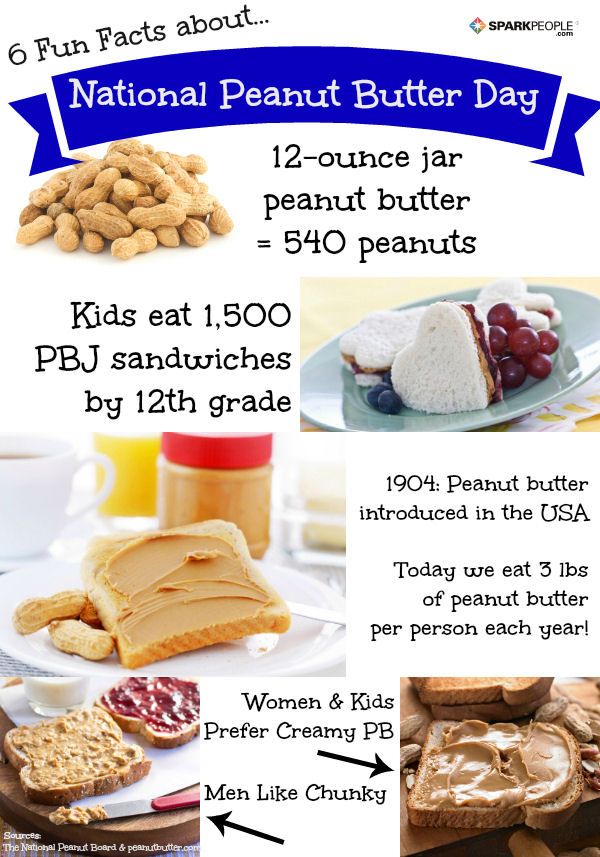 If your doctor allows you to give your child nuts, then it is worth starting with small doses.
If your doctor allows you to give your child nuts, then it is worth starting with small doses.
"Don't spoon-feed whole nuts or peanut butter before your baby is four years old if there is a risk of choking," says Dr. Nunez. He recommends adding peanut butter to baby puree or diluting it by mixing two teaspoons of water with two teaspoons of oil. Some experts hope that this study will be repeated with other food allergies and yield similar results.
Found a violation? Complain content
When can children eat peanut butter?
Content
- when it is better to use peanut oil
- Risk factors of allergies
- Allergic reactions
- Arachis oil for children
- EXTECTIONS WITH ARAHIS oil
- ARCHICAL PAINS fingerprints PB&J
Peanut butter is a versatile product, tasty and healthy at the same time. You can enjoy it as a snack or meal. Spoon crunchy peanut butter on a stick of celery, or make a peanut butter, jelly, and banana sandwich for lunch.
No matter how you spread it, peanut butter is delicious and can be a staple in any healthy diet.
The problem is that it can't be either. This is because about 3 million people in the United States are allergic to peanuts and tree nuts. In fact, peanut allergy is the most common allergy among children with food allergies.
But recent research has shown that early exposure to peanuts can greatly reduce your child's chance of developing a nut allergy.
If you want to introduce your child to peanut butter but are afraid of allergies, read on for tips, tricks and some recipe ideas.
When to Use Peanut Butter
The American Academy of Allergy, Asthma, and Immunology recommends giving your baby peanut butter only after he or she is safe to feed other solid foods without any allergy symptoms. This can happen between 6 and 8 months of age.
Do not give whole peanuts or peanut pieces to children under 4 years of age. Peanuts can be a choking hazard.
Allergy risk factors
Peanuts are among the eight foods that account for 90% of all food allergies. A peanut allergy that usually develops in childhood can last a lifetime. If you've outgrown your peanut allergy, there's still a chance it will come back.
Children with other food allergies are at increased risk of peanut allergy. The same goes for children in families where food allergies are common. Children who are allergic to peanuts should never be given peanuts.
You should also be careful when giving peanut butter to your child if you think they are at risk for allergies. First, talk to your doctor and ask about an allergy test. If you are sure you want to introduce peanuts, it may be wise to give your child peanut butter during a doctor's visit.
Allergic reactions
There are several ways to identify food allergies. Your child may experience:
- hives (red spots that mimic mosquito bites)
If your child has a severe allergic reaction, they should see their pediatrician (and possibly an allergist) to determine the cause and treatment of the allergy.
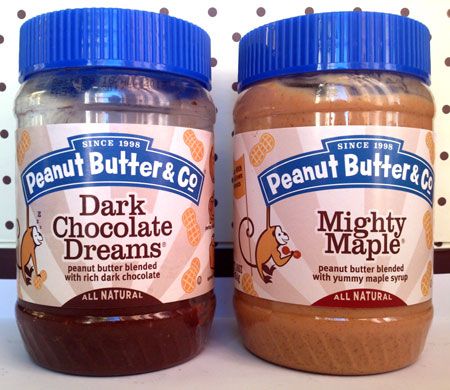
Children's Peanut Butter
You should give children peanut butter, which should be smooth and runny. It is difficult for a child to eat thick peanut butter. If it is too thick to swallow, there may be a choking hazard.
Don't buy chunky peanut butter and don't serve real peanuts. Both can cause your baby to suffocate. To dilute the texture of peanut butter, mix it with a little water to make it more like diluted paste.
Recipes
Peanut Butter Teething Cookies
This Peanut Butter Teething Cookie recipe is a delicious and organic way to help your baby use their new gummies. The cookies require only eight ingredients and take only 10 minutes to make and 20 minutes to cook.
Recipe yields 20 to 24 treats. You can serve them at room temperature or put them in the freezer briefly to soothe your child's gums. Make sure they are not too hard and crumbly so that the pieces do not break off and cause a risk of suffocation.
Peanut Butter & Butternut Squash
Add a twist to your baby's solid food rotation of peanut butter and butternut squash.



